The Ultimate Guide on How to Clean and Care for Golf Gloves

Table of Contents
Key Takeaways
- Keeping your golf gloves clean helps improve grip and feel. That raises your complete performance on the course, enabling you to strike your shots with more confidence and control. So it is very important to know how to clean and care for golf gloves.
- Knowing whether our gloves are truly leather, synthetic, or a combination of the two helps us clean them properly and not ruin the material.
- Making glove hygiene a priority with regular cleaning goes a long way in ensuring gloves are smelling fresh, maintaining longevity and bacterial prevention.
- Air drying them properly in a cool, shaded, detergent-free and well-ventilated area keeps their original shape and prevents material breakdown. We should never use direct heat.
- It’s essential to condition leather gloves after cleaning, as this keeps the leather supple and flexible, making them last longer.
- Use several gloves to lessen the amount of use each glove incurs. Storing them flat prevents each pair from becoming damaged, so they’ll be better prepared for longer rounds of play.
Clean golf gloves in soapy, cold water and rinse well to allow to dry out. With clean gloves, our grip will be more secure and long-lasting on the course. Initially, we notice that dirt, sweat, and grass stains start darkening the glove after only a few rounds.
Regular washing prevents the leather on your glove from hardening and helps maintain a snug fit. For synthetics, we follow a cut and dry process but avoid abrasive cleaners. We air dry them flat so that they don’t lose their form.
Worn, stiff, or grimy gloves can ruin our swing and ruin our day. That’s why we make cleaning them a part of our routine! In the following pages, we’ll walk you through getting started, step by step.
Read on for some simple solutions that work for leather and synthetic golf gloves.
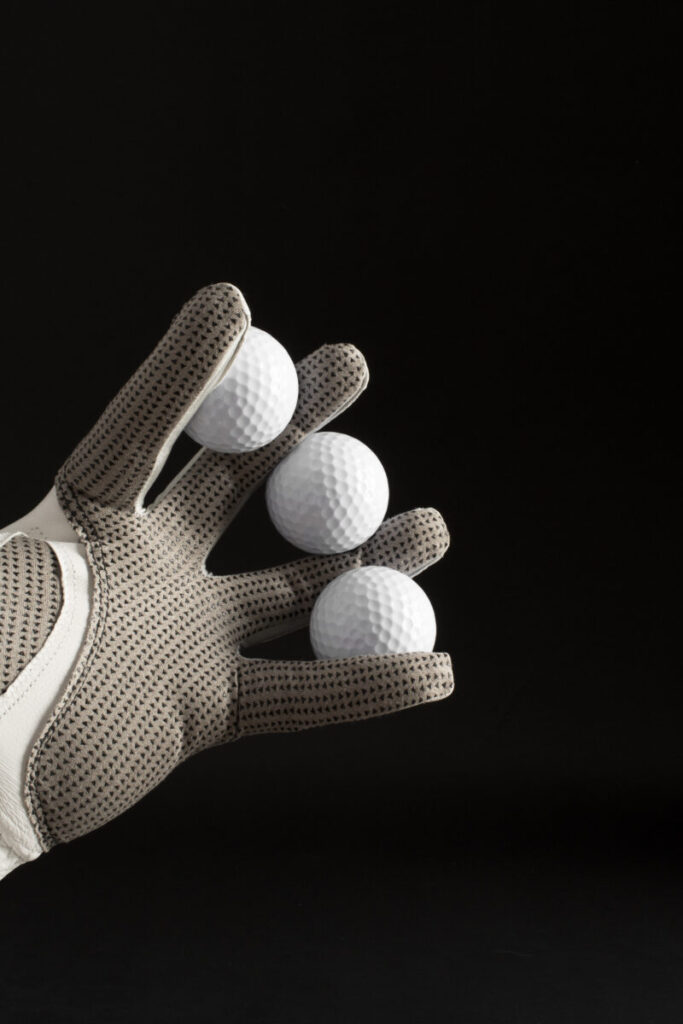
Why Bother Cleaning Golf Gloves?
Taking the time to clean our golf gloves will do a lot for our game and our bank account. Over time, each time you use a dirty glove, it picks up natural oils, dust and sweat and becomes slick and stiff. When gloves are allowed to deteriorate like this, the grip goes south hard and shots lose a lot of their magic.
Freshly laundered gloves allow us to minimize club movement and retain that fresh, out-of-the-package feel, swing after swing. With each swing we’re aware of that silky smooth difference.
Improve Your Feel and Control
A freshly cleaned glove that is dirt and sweat-free creates the optimal grip pressure. That translates to greater control over our shots. When grit and grime build up, that fantastic feel is lost, as the glove surface becomes rough and sticky instead of soft and sensitive.
This allows us to feel the club more throughout our hands. When we play, every shot is on target and our swings are flush. If gloves are filthy, we’re losing out on useful feedback from the club allowing us to tune our game accordingly.
Extend Glove Lifespan Significantly
Cleaning our gloves isn’t just a performance issue. It’s a longevity concern, too. With proper cleaning, some gloves last over 20 rounds! By addressing indelible stains and dirt as soon as they’re acquired, you can stop your gloves from wearing out prematurely.
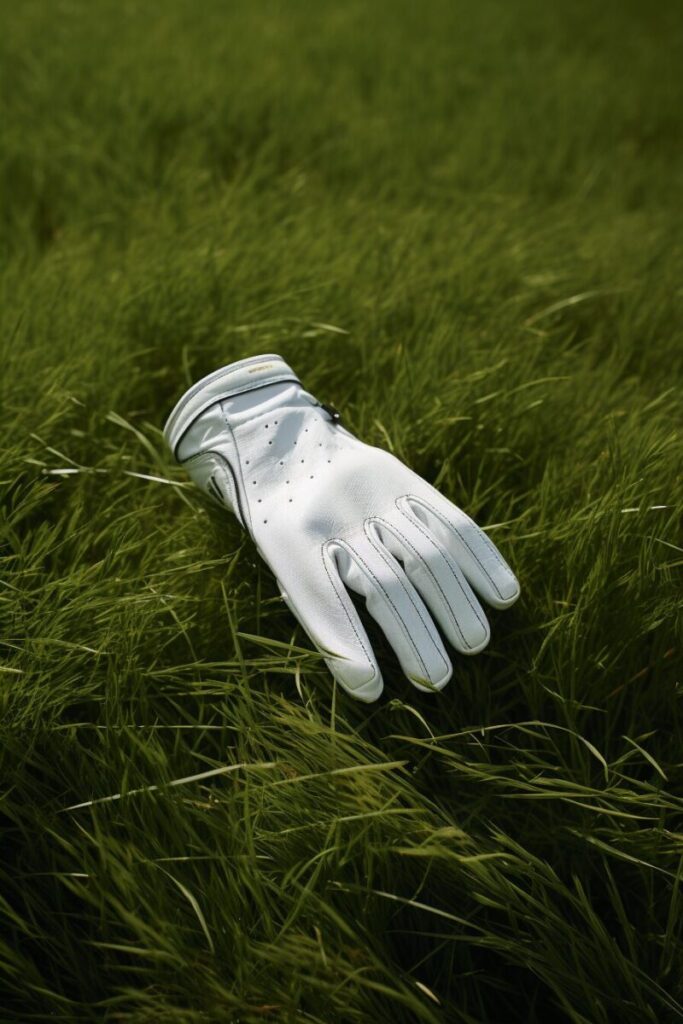
It saves us from replacing gloves every other week. While the average golfer goes through three to four gloves per year, cleaning them often can double their lifespan. That’s why we pay attention to our gloves to detect wear as it happens and keep them in play longer.
Maintain Essential Glove Hygiene
Gloves hold sweat and are a breeding ground for bacteria. Gloves hold in your sweat. Cleaning them prevents bacteria and bad smell from developing. Our cleaners are designed to make gloves feel clean, not smell clean.
It’s wise to own our personal gloves and not swap. Minimize the germ spread by having our gloves cleaned and sanitized. Checking for signs of mold or mildew allows us to stop issues before they develop into a serious concern.
Prevent Material Breakdown
The other reason is that sweat and moisture badly degrade leather and synthetics over time. Salt from sweat can dry the leather, eventually making gloves stiff and crack. We always use soft products, storing gloves away from the sun to keep the material healthy.
Many people just toss them in the washing machine, but be sure to read the care tag before risking that.
Understand Your Glove Material First
We do know our glove material, and we see many players change golf gloves frequently—even every few weeks. This isn’t necessary when we understand our glove’s material and how to care for it properly. Each glove—whether leather, synthetic, or a combination of the two—requires a specific cleaning approach.
Leather gloves are luxurious, soft and mold to our hands, but synthetics generally fare much better with sweat and the elements. Few, like Bionic gloves, stretch lifetimes two to three times longer than the average glove. That’s what makes the effort to keep them clean so rewarding!
Leather Glove Cleaning Needs
With leather we encourage the use of mild soap and lukewarm water only. A quick wipe down with a soft cloth will remove dirt, salt, or excess moisture. Soaking leather shrinks or stiffens it, so we never dunk them in a bucket of water.
After a wash, a good leather conditioner will keep the glove soft and help it stand the test of time. When we are storing them, we look for a dark, cool, dry location—like a closet shelf—so the mold doesn’t have the opportunity to develop. We never allowed the glove to dry bunched up inside a bag.
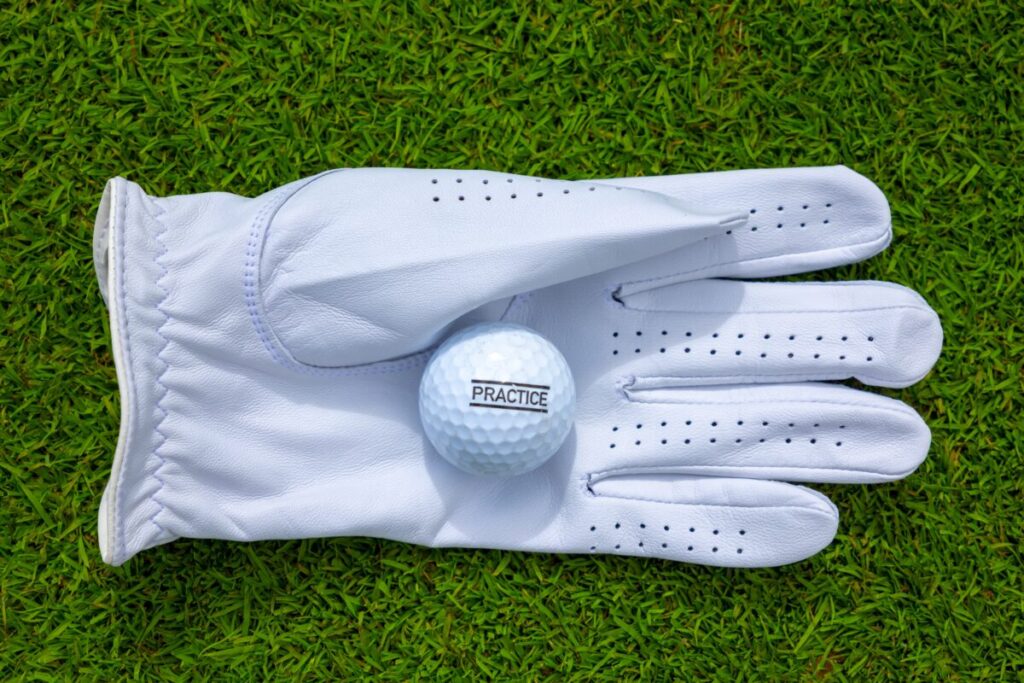
Synthetic Glove Washing Tips
Synthetic gloves hold up better to repeated washings. We throw them in the washing machine on a delicates cycle with cold water and mild soap. Bleach and other aggressive cleaners decompose fibers, in which case we avoid them.
Except for the RelaxGrip® 2.0, most gloves, including most made by Bionic, are all safe to wash. After washing, we always allow gloves to air dry out of direct sunlight to preserve colors and elasticity.
Handling Mesh and Mixed Materials
Other gloves incorporate mesh or blended materials for improved breathability. We locate these areas and take a very soft bristle brush to them, being careful to avoid catching the weave.
We look at all the manufacturer tags for special instructions. Because twisting or wringing these gloves alters their fit, we prefer to press out water gently instead.
Quick Pre-Wash Glove Check
Before we even reach for water or soap, a quick check of our golf gloves helps us save time and keep the material in good shape. We all play rounds year-round, and we all know that a fresh clean glove lasts many more rounds.
After nearly 60 rounds played this year, I finally broke in my second glove. I washed the first one a minimum of five washes just to test how well it would hold up! The majority of golfers replace their gloves every two weeks.
Fortunately, a quality glove combined with frequent washings can more than double its lifespan. Shockingly, well over 80% of our contacts said they NEVER wash their gloves! Others prefer to let three or four gloves get dirty, then wash them all together by hand.
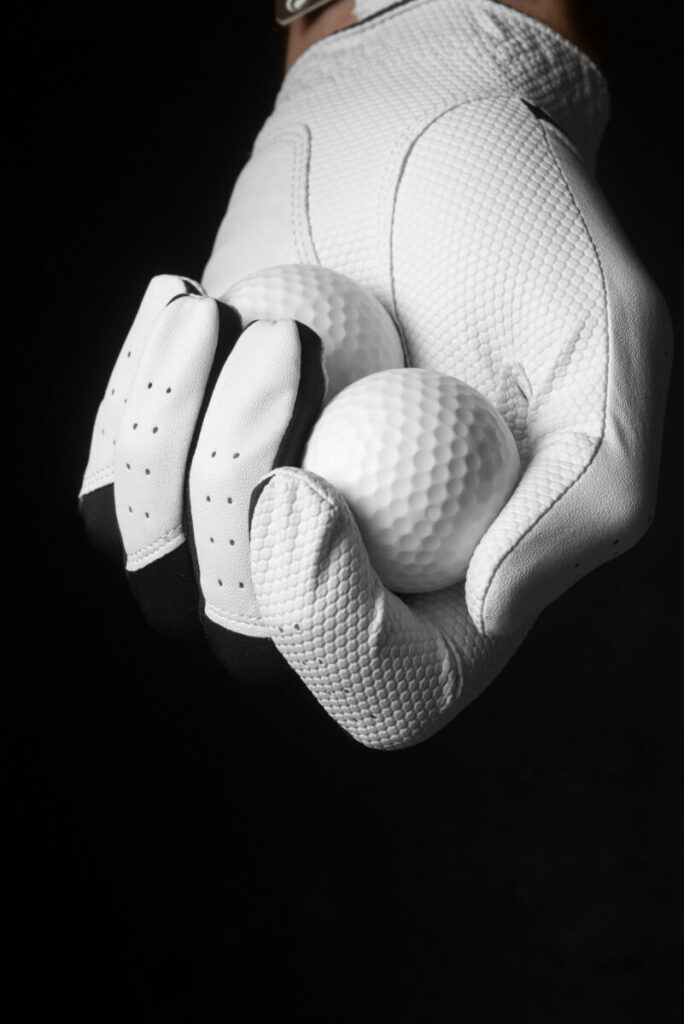
Identify Heavy Soil and Stains
We begin by checking for grime or perspiration stains, primarily on the surface and fingers. Grip areas are usually the parts that accumulate the most dirt from regular gameplay.
Visual evidence stains often appear at the beginning as dark spots or yellowing that are very easy to see on the glove’s tan colored leather. When treating areas with deep soil, we are aware that those locations will require more aggressive scrubbing afterward.
Occasionally, we’ll notice minor blemishes appearing at the knuckle joint or at the tips of the fingers. Concentrating on these areas keeps our glove’s appearance and performance at its peak.
Look for Wear and Tear
Looking closely, we inspect seams and edges for loose threads or overly thin spots. If there is a hole or a crack, the glove is probably at the end of its lifespan.
A little normal wear and tear is okay. Bionic gloves have mini-towel patches that really absorb sweat. This cool extra makes the gloves last two to three times longer than typical gloves!
When the condition is really not bad, a deep clean of the right type can make a world of difference.
Test Cleaners on Small Spots
So prior to washing it’s always a good idea to test any cleaner on a small, out of sight area first. Maybe we want to see how the leather adjusts or if the color comes out.
The best place to make a test application is on the inside cuff or underneath one of the fingers. If the cleaner spot test produces no damage after a minute or two, we trust the cleaner to work on the entirety of that glove.
With my all-leather Bionics, a delicate cycle and air drying have worked marvelously dozens of times.
Your Glove Cleaning Playbook
When it comes to golf, we all experience how a clean golf glove can improve our grip and comfort while playing on the course. We figured out an easy system to get the most life out of our gloves.
Here’s an example — first, we lay out all our supplies before getting started. That includes some gentle soap, a soft brush, a clean cloth, and lukewarm water. We maintain a strict step-by-step process to ensure each glove receives the same quality care.
That way, they last longer and help keep our game flowing smoothly. It’s a common occurrence that many golfers find their gloves giving out after only 6 to 10 rounds. Frequent cleaning is the key to doubling or tripling their life.
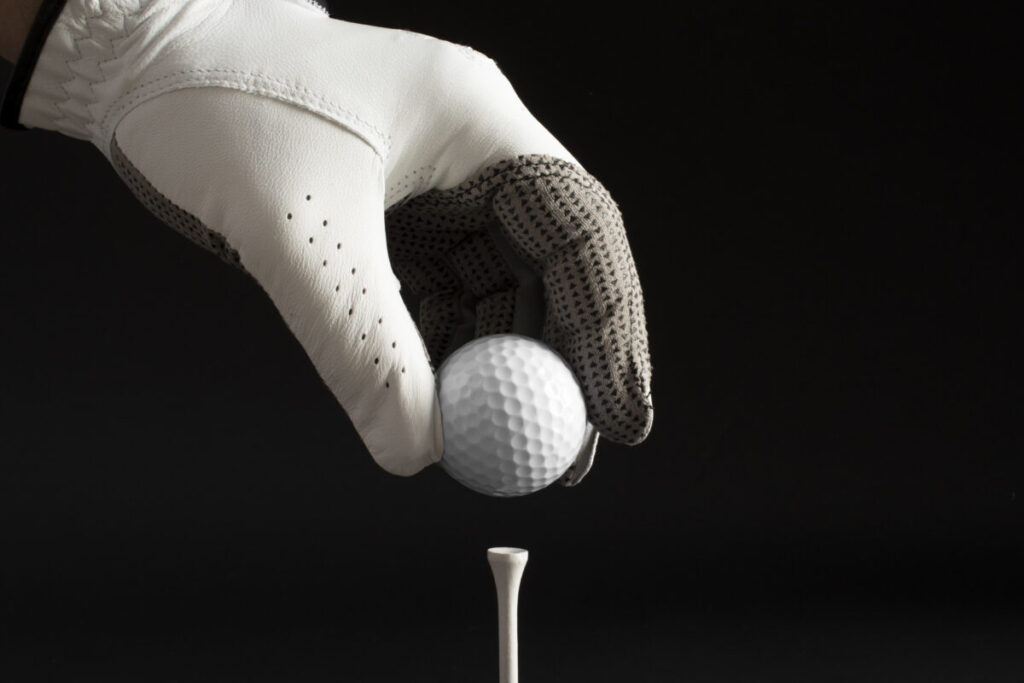
1. Select the Right Cleaning Method
Then we consider all detergent options, based on how you’re looking to clean your gloves. Usually, it’s better to hand wash than machine wash, particularly in the case of leather.
Light dirt can be removed with a quick wipe using a damp microfiber cloth. When gloves are particularly soiled, we add a soft bristle brush to restore them further. This prevents the fabric from being scuffed or pulled out of shape.
For a softer approach, we would use a solution of water and white vinegar or mild soap.
2. Mix a Gentle Cleaning Solution
We use a small amount of mild detergent in lukewarm water—just enough to submerge the glove without creating bubbles. Warm water is effective for breaking up dirt while still being gentle on the glove’s leather surface.
Then we check to ensure the solution is perfectly uniform, ensuring no soap is left clinging to the glove.
3. Master the Hand Wash Technique
We soak a soft cloth or sponge in the soapy water. After that, we proceed with cleaning the glove, paying particular attention to the palm and fingers.
We avoid hard rubbing, twisting or wringing the glove. Rinsing with cool water removes any remaining soap and we lightly press out excess water.
4. Tackle Tough Stains Carefully
For grimy residual dirt, we reach for the soft brush. Next up, we rub in the cleaning solution and allow it to soak for several minutes before rinsing thoroughly.
In this manner, we remove the stain without compromising the durability of the glove.
5. Rinse Well Without Twisting
We rinse the gloves under cool, running water, squeezing water out without wringing. This helps maintain the shape and prevent the fabric from sagging.
6. Give Leather Gloves Extra TLC
After cleaning, we work a coat of leather conditioner into the leather, working it especially into seams and folds. Finally, we store gloves flat, in a cool, dry environment.
7. Machine Washing: Proceed with Caution
If we do have to wash them, we just make sure to close up the velcro straps first. Next, we place the gloves into a laundry bag, choose a cold, gentle cycle.
We avoid the dryer altogether, air drying gloves flat to dry.
Natural Cleaning Solutions Explored

We find solutions to clean golf gloves that adapt to our everyday lifestyle. Natural cleaning solutions are best when we’re looking to minimize chemicals and just keep it basic. We favor ingredients such as vinegar and baking soda because they are cost-effective.
On top of that, you can quickly spot them in any kitchen. White vinegar diluted with a bit of warm water will help to dissolve even the grossest, gritty sweat and grime. We pound a gentle cloth into the mixture, then clean the glove, moving in tiny circles.
For stubborn stains, we mix up a paste of baking soda and water. Lastly, we use a soft brush to work it into the surface. This gentle scrubbing aids in removing dirt and stains while protecting against damage to the leather or fabric.
Lemon juice is another excellent choice. Its acid tears into stains and odors. We highly recommend mixing lemon juice with water, then spot treating the glove.
We dip it lightly into cleaning products with a cloth, being careful not to saturate the glove. This prevents the glove from hardening and becoming brittle once it dries. We test these solutions on a pilot small corner first.
This can cause problems with certain gloves, such as those produced with genuine leather, which can be adversely affected by acid or soda. As with lead, testing prevents any potential harm from going further.
We recommend these natural solutions for cleaning light to medium dirt and muck. They do not leave behind harsh odors. When we pit them against retail cleaners, that’s when we find a home for both.
Commercial products might scrub better, faster. Natural approaches allow us to avoid powerful fragrances and weird synthetics. Your gloves will last longer, too, since these tender approaches won’t ruin them at the speed of light.
We have experienced the same with conventional vs natural cleaning, and we find a natural cleaning provides a clean, healthy shine without the hassle. We love convenience, low cost, and no risk. Tough enough stains may still need a trick that’s a bit stronger.
Drying Gloves the Right Way
Drying golf gloves the right way will help them stay soft, properly shaped and in great condition for the next round. We recommend air drying our gloves, as this method allows the gloves to maintain their form and therefore last longer.
First, lay your gloves flat on a clean towel. The towel soaks up the additional moisture to ensure the gloves don’t become rigid or warped. Hanging gloves in a well-aerated, shaded space (like an insulated garage) helps them dry quicker without damaging the rubber.
Hanging gloves up by the fingers causes them to stretch, so we don’t do that. Instead, we allowed them to just lay out their full width. After a couple of hours, we put our hand inside to help reshape the glove to its proper form.
Always Air Dry Your Gloves
As a rule, we prefer air drying to mechanical processes. A well aired dry, dark ambient space allows air circulation around the glove. A cotton towel is great for pressing out excess water.
We flip them every hour or so, ensuring that both sides dry equally. Patience goes a long way here. Hurrying with machines or heat can damage the handfeel and fit of the gloves.
Air-drying overnight tends to do the trick. If your clothes are still a bit wet, simply allow them to dry a little longer.
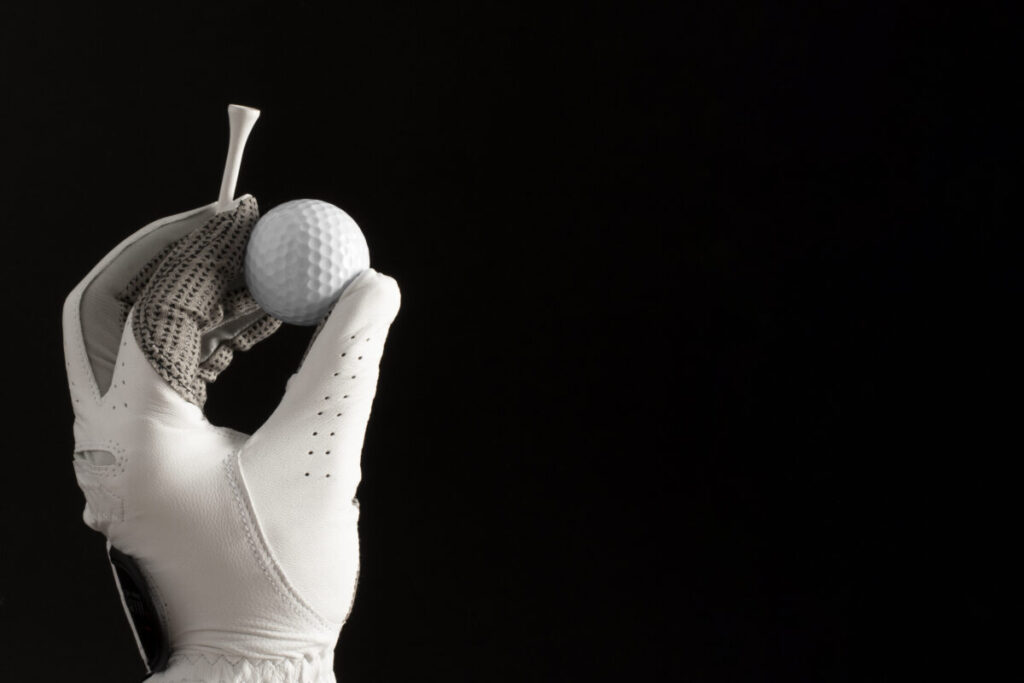
Never Use Direct Heat
We avoid dryers, heaters, and scorching sun when drying. Excessive heat will shrink leather gloves and cause synthetic gloves to stiffen or become misshapen.
Even a very short exposure in a hot dryer can shrink gloves and make them fragile. We first hit up the dryer on low heat for a quick five minute spin.
Finally, we complete the drying process through air drying. We find that a room at interior temperatures (neither too warm, nor too cold) yield the best results, and sequester gloves from windows or stovetops.
Reshape Gloves While Drying
When gloves are still moist, we have our hands to mold the fit. That involves matching up topseam fingers and palm easing the fit to keep it accurate.
We try to avoid yanking forcefully, because this will overstretch the gloves. Laying gloves out flat or storing gloves with fingers extended preserves their shape for a lifetime.
Ensure They Are Fully Dry
When placing them back into storage, we make sure to look for any signs of dampness, including the insides. If gloves are stored while still wet, mildew or odor can develop.
We always double check that every part is completely dry before we fold or store them. Save ‘em for the next ideal day out there!
With the right care, a single pair can make it production for about 60 rounds of golf.
Post-Wash Glove Conditioning Tips

Now that we’ve washed our golf gloves, it’s time to turn our attention to what comes next. This step is important to keeping them soft and snug. Leather gloves require penetrating moisture to remain supple, soft, and in good condition.
Immediately after patting them dry with a towel, we should pull out a good leather conditioner. To condition leather, it works best to choose a dedicated golf glove conditioner, not just any leather conditioner. These unique conditioners absorb instantly.
Grease-free, they don’t leave a tacky residue, so you can guarantee the best grip possible on the course. We’re able to purchase these products at nearly any local golf shop or online, plus they’re simple to incorporate into our practice.
When applying conditioner, it’s worth taking the extra time to focus on areas where the leather creases the deepest. Consider the creases over the dorsal knuckles and webbing between fingers. These areas have more wear and dry out faster than the rest of the glove.
If we don’t do those, the glove will stiffen up and begin to crack and deteriorate. A little dab of glove conditioner, worked in with our fingers, can help revive those worn, creased areas. We allowed the glove to air-dry afterwards, laying it flat in a cool area away from direct sunlight.
This helps to retain its shape and prevent shrinking of the leather. Don’t underestimate the importance of routine care. If we’re using a golf glove two or three times a week, conditioning every second wash is a solid rule of thumb.
For you casual players, once a month is enough to ensure the leather stays hydrated and conditioned. This practice is what helps our glove stay limber, pliable, quickly attainable on our hands, and death on our swing.
Using the right conditioner preserves the glove’s fit, so we get the same comfortable feel every round. With these cleaning and storing tips, we can all be proactive and help extend our golf gloves life. That saves money for us and makes every game a little bit better run.
Smart Habits for Longer Glove Life
To get the most life and performance out of your golf gloves, it only takes developing some smart habits. If you treat our gloves right, they’ll continue to be soft, retain their grip, and last longer than you might think. If golfers would wash their glove more often, we’ve proven that there are significant improvements when the glove is cleaned and properly stored.
Rotate Multiple Gloves Regularly
We’ve found the best solution is to store a few pairs of gloves in our golf bag. By rotating them during warm-ups and between rounds, no one glove incurs all the damage. This simple habit allows for each glove to air out, reducing sweat accumulation.
On warmer days we tend to change gloves out more frequently and choose lighter gloves when the weather is particularly humid. Whether it gets wet or worn out during the game, a backup glove is a lifesaver. Protect your investment by allowing each glove to rest between rounds, extending their life expectancy.
With consistent maintenance, you can usually achieve 20 or more usages before having to replace it.
Store Gloves Flat, Not Crumpled
Storing gloves laid flat in a cool, dry place prevents them from getting creased or hardened. We either use them with glove holders or a pouch in our small bag, so they aren’t all crushed. Folding or bunching them up creates permanent creases that cuts their life span significantly.
Proper storage helps prevent mildew and keeps the gloves formed. That way, the next time we put them on our hands will be happy.
Manage Sweat During Your Round
Since sweat can be deadly on a glove, we keep a microfiber towel handy to wipe our hands down during play. Moisture-wicking wrist sweatbands work wonders. At the end of a round, we placed gloves in a mesh pouch to let them breathe and dry out.
If gloves become overly wet, we put on a fresh dry glove. This prevents gloves from becoming slippery or hard and causing us to lose dexterity.
Recognize Replacement Time
We look for any weak areas, like thin spots, holes, or loss of dexterity. White gloves in the string would indicate shrunk irreplaceable. If gloves feel hard or no longer fit properly, it’s time for a new pair.
By tracking the frequency of play and washing, we can identify when gloves have reached the end of their useful life.
Avoid These Common Cleaning Errors

Caring for and cleaning our golf gloves properly will help them last much longer. This is a trap that’s deceptively easy to fall into without close scrutiny. Bleach or other strong cleaners might seem like the answer at first. They can easily compromise the fibers and dull the color.
Instead, we settle for a combination of lukewarm water and regular soap. Hot water can shrink the glove, mess up the fit, and even weaken the Velcro strap, so we always use cool or lukewarm water instead. Rough brushes and stiff pads used to scrub may scour the surface. They dry out and weaken the leather or synthetic material.
We remove grime with a cleaning cloth or our fingers. Of course, we avoid anything that will scuff the glove.
Soaking gloves just can’t be so easy, right? Letting them soak in water for extended periods can weaken the stitching and stretch the fabric. Your go-to quick clean, one dip does the trick! It gets dirty grime off without warping your glove or rendering it floppy.
After scrubbing up, we always follow with a proper rinse-off. Residues of soap left on the interior can dry out the glove, make them brittle or rigid and/or potentially lead to dermal irritation. We flush until the water runs clear.
Drying requires special attention, as well. We allow gloves to dry in an ambient, cool, shaded location, never introducing direct heat or to a source in direct sun. Over-drying will leave the glove stiff and difficult to use, drastically reducing its lifespan.
Dryer or heater? We dry the glove without a dryer or heater. We dry it flat or hung by the cuff. In addition to conditioning during the break-in period, sometimes we’ll throw a golf ball in the glove while it dries to train it to hold its shape.
We pay close attention to the frequency with which we clean as well. Over-washing shortens the lifespan of the glove. That’s the reason we clean all dirt after every match and wash completely only when needed.
Most of us have two gloves that we rotate and change out halfway through the round, extending the life of both gloves. Properly cared for, our gloves usually last us 20 rounds or more.
How Cleaning Affects Glove Performance
When we maintain our golf gloves, we play with better grip and smoother precision on each shot. Mud and perspiration accumulate quickly, creating a greasy, slippery surface that’s difficult to grip. A clean glove avoids the issue of our hands sliding off. This is particularly critical on humid days or when we go out early in the morning with dew on the grass.
We sense the club more and deliver a more consistent stroke when the glove fits snugly and remains pliable. When we wash the dirt off and give the glove some time to breathe, it stays tacky and smooth-gripping. That imparts a much greater sense of confidence at address and during the course of your swing.
Proper glove care makes them last longer, which is better for the environment, and helps us all save money. Say no to strong detergents! Avoid harsh chemicals and hot water which can cause fibers and leather to crack, making gloves stiff and no longer fit properly.
Technology advances Gloves like the Bionic StableGrip are designed with intelligent materials able to survive hundreds of rounds of use. Harsh chemicals and sun-drying do contribute to stiffness. Our takeaway is that most gloves should be fine with a cleaning now and then—if they’re cared for, of course.
The RelaxGrip® 2.0 needs specific cleaning attention. During gameplay, we alternate between two gloves. This allows each glove to fully air out between wears and further aids in reducing moisture and wear. It’s why our gloves stay smelling clean and looking new, game after game, season after season.
Regularly cleaning gloves greatly enhances our own comfort during rounds. Nobody wants a hot or contaminated glove rubbing up against their bare skin. Keeping proper hygiene with our hands maintains overall dry skin and prevents chaffing.
That way, we’re able to concentrate on making our next shot rather than always fiddling with our equipment. Not only does taking care of our gloves protect us, when we protect our gloves, we protect our wallets too. A few minutes of cleaning and drying time results in several months of use per glove, even with regular play.
Conclusion
We immediately notice, when our gloves are clean, how much better our grip stays tight and our game remains sharp. New gloves are kinder on your hands, provide a better grip and control, and have greater durability while you’re out on the course. A brief wash and thorough drying really helps both the smell and shape aspect. We try to keep it basic with mild soap, cool water, and air. We avoid extreme heat or aggressive scrubbing in order to protect the integrity of the leather. Our hands are our best judges each round—no tacky feel, nothing sticky, nothing greasy, everything natural. Knowing we have a clean glove helps us put our mind at ease and focus on our swing. Looking to maintain that competitive advantage? Give them a rinse after every round and notice the difference the next time you step on the course.
Frequently Asked Questions
How often should I clean my golf gloves?
To keep your gloves in tip top shape, clean them every five rounds or whenever you notice they need a freshening up. Cleaning keeps the glove more grippy and lasts longer.
Can I wash leather golf gloves in a washing machine?
Never machine wash leather gloves. To keep your glove looking nice and to keep it soft, hand wash your glove with warm water and mild soap.
What’s the best way to dry golf gloves after cleaning?
Let your gloves air dry, preferably out of direct sunlight and heat. Lay them out flat to allow them to retain their shape and prevent shrinkage.
Which cleaning solution is safest for golf gloves?
A mixture of gentle soap and lukewarm water will be safest. Do not use bleach or other harsh chemicals, since these can deteriorate the glove material.
Will cleaning golf gloves improve their performance?
Of course, fresh gloves have superior grip, comfort and durability. By washing them to remove sweat, dirt and oils you’re taking a step to preserve them for optimum performance.
Should I condition my golf gloves after washing?
Yes, for leather gloves, apply a leather conditioner after they have dried. This not only helps them stay soft and flexible, but it helps them from cracking.
Can I use the same cleaning method for synthetic gloves?
No, never assume, always read the care label. Synthetic gloves can resist mild soap and water but dry more quickly and do not require a conditioner.
